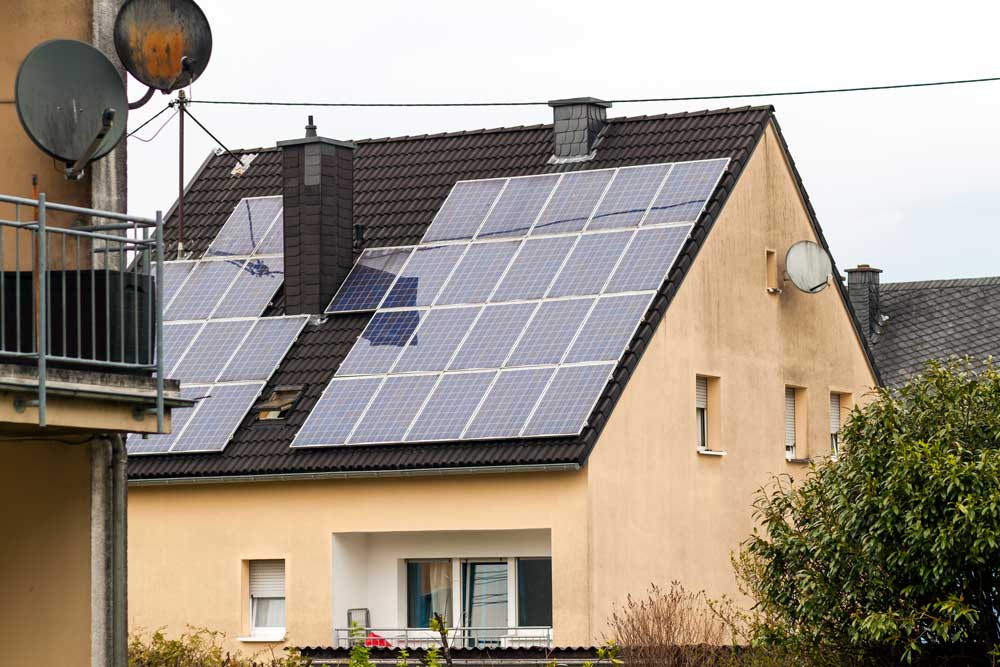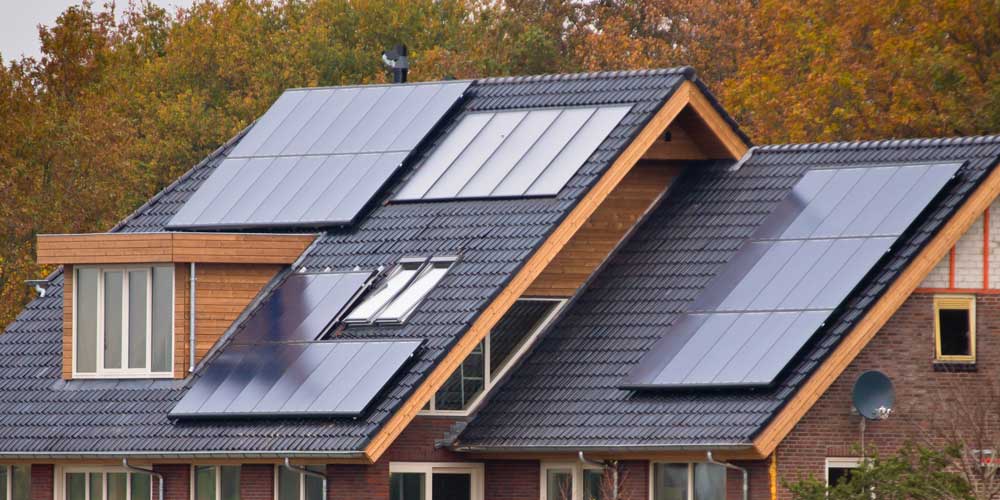Residential solar panels, also known as rooftop solar panels or home solar panels, are solar panels installed on residential buildings to harness solar energy for electricity generation. These panels are designed to be mounted on the roof or the exterior walls of homes.
The electricity generated by residential solar panels can be used to power various appliances, devices, and lighting within the home. Excess electricity can be stored in batteries for later use or fed back into the grid through a process called net metering. Net metering allows homeowners to receive credit for the surplus electricity they generate, which can offset their electricity bills when they draw power from the grid at times when their solar panels aren’t producing enough energy.
Residential solar panels offer numerous benefits, including reduced electricity costs, increased energy independence, and a lower carbon footprint. They are becoming increasingly popular as the cost of solar technology decreases and the awareness of environmental sustainability grows. Many governments also provide incentives, such as tax credits or rebates, to encourage homeowners to install solar panels and promote the use of clean energy.
Why Do Australians Switch to Solar Panels?
- Abundant sunlight
Australia receives abundant sunlight throughout the year due to its geographical location. This makes solar energy a viable and efficient option for generating electricity.
- Cost savings
- Government incentives
The Australian government has implemented various incentives and support programs to promote the adoption of solar energy. These incentives include feed-in tariffs, where homeowners are paid for excess electricity fed back into the grid, and small-scale renewable energy certificates that provide financial incentives for installing solar panels.
- Environmental benefits
- Energy independence
- Increasing affordability
The cost of solar panels has decreased significantly over the years, making them more affordable and accessible to a wider range of homeowners. This affordability, combined with the potential long-term savings, makes solar panels an attractive investment.
- Community awareness and support

How much does home solar cost in Australia?
The cost of home solar systems in Australia can vary depending on several factors, including the size of the system, the quality of the components, installation requirements, and any additional features or services included. Here are some general cost ranges to give you an idea:
Small system (1-3 kW): The cost for a small residential solar system typically ranges from around AUD 3,000 to AUD 6,000.
Medium system (3-5 kW): The cost for a medium-sized system can range from approximately AUD 6,000 to AUD 10,000.
Large system (5-10 kW): A larger residential solar system can cost anywhere between AUD 10,000 and AUD 20,000.
These price ranges are approximate and can vary depending on factors such as the location, the complexity of the installation, and the specific components chosen. It’s essential to obtain quotes from multiple solar installers to get a more accurate estimate for your particular circumstances.
It’s worth noting that government incentives, such as small-scale technology certificates (STCs) and feed-in tariffs, can help reduce the upfront cost and provide ongoing financial benefits for solar system owners. These incentives can vary by state or territory, so it’s important to check the available programs in your area.
Additionally, the long-term savings from reduced electricity bills can offset the initial investment, making solar systems a cost-effective choice over their lifespan, typically around 20 to 25 years.
Australia’s solar rebate
Australia’s solar rebate, also known as the Small-scale Renewable Energy Scheme (SRES), is a government incentive program designed to encourage the installation of small-scale renewable energy systems, including solar panels, solar water heaters, and heat pumps. The rebate is provided in the form of small-scale technology certificates (STCs), which can be traded or sold to help reduce the upfront cost of installing a solar system.
Here are some key points to understand about Australia’s solar rebate:
Small-scale Technology Certificates (STCs): Under the SRES, eligible solar systems are assigned a certain number of STCs based on their expected electricity generation over a set period. The number of STCs varies depending on factors such as the system size, geographical location, and the amount of renewable energy generated.
Financial Benefit: The STCs can be sold to registered agents or traders in the Renewable Energy Certificate (REC) market. The value of each STC is not fixed and can fluctuate based on market demand and supply. The financial benefit from selling STCs can be used to reduce the upfront cost of the solar system.
Point of Sale Discount: Many solar installers offer a point of sale discount, where they deduct the value of the STCs directly from the system’s purchase price. This reduces the upfront cost for the homeowner, making solar more affordable.
Reduction of STC Value Over Time: The number of STCs eligible for a system decreases each year as the SRES is gradually phased out. This means that the financial benefit decreases over time, making it more advantageous to install solar sooner rather than later.
Registration and Compliance: The solar installer or system owner needs to ensure that the system is installed by a Clean Energy Council-accredited installer and that all necessary paperwork, including the creation and assignment of STCs, is completed accurately. The Clean Energy Regulator oversees the compliance of the scheme.

Summary
Australia has witnessed a significant uptake of solar panels due to various factors. The country’s abundant sunlight, combined with decreasing costs and government incentives, has made solar energy an attractive option for many Australians.
Residential solar panels, installed on rooftops or walls, utilize photovoltaic (PV) cells to convert sunlight into electricity. These panels allow homeowners to generate their own electricity, leading to cost savings, energy independence, and reduced carbon footprint. Government incentives such as feed-in tariffs and small-scale technology certificates (STCs) further encourage the adoption of solar panels by providing financial benefits. The STCs can be traded or sold, reducing the upfront cost of solar installations. The SRES, or solar rebate, facilitates this process by assigning STCs to eligible systems. The number of STCs decreases over time, making it advantageous to install solar systems sooner. Compliance with installation standards and proper documentation is important, and accreditation from the Clean Energy Council ensures system reliability. It is worth noting that specific details and incentives can vary among
Australian states and territories, so checking local regulations and consulting with solar installers is recommended. Overall, the combination of Australia’s solar-friendly environment, cost savings, and government support has led to the widespread adoption of solar panels in residential settings.








